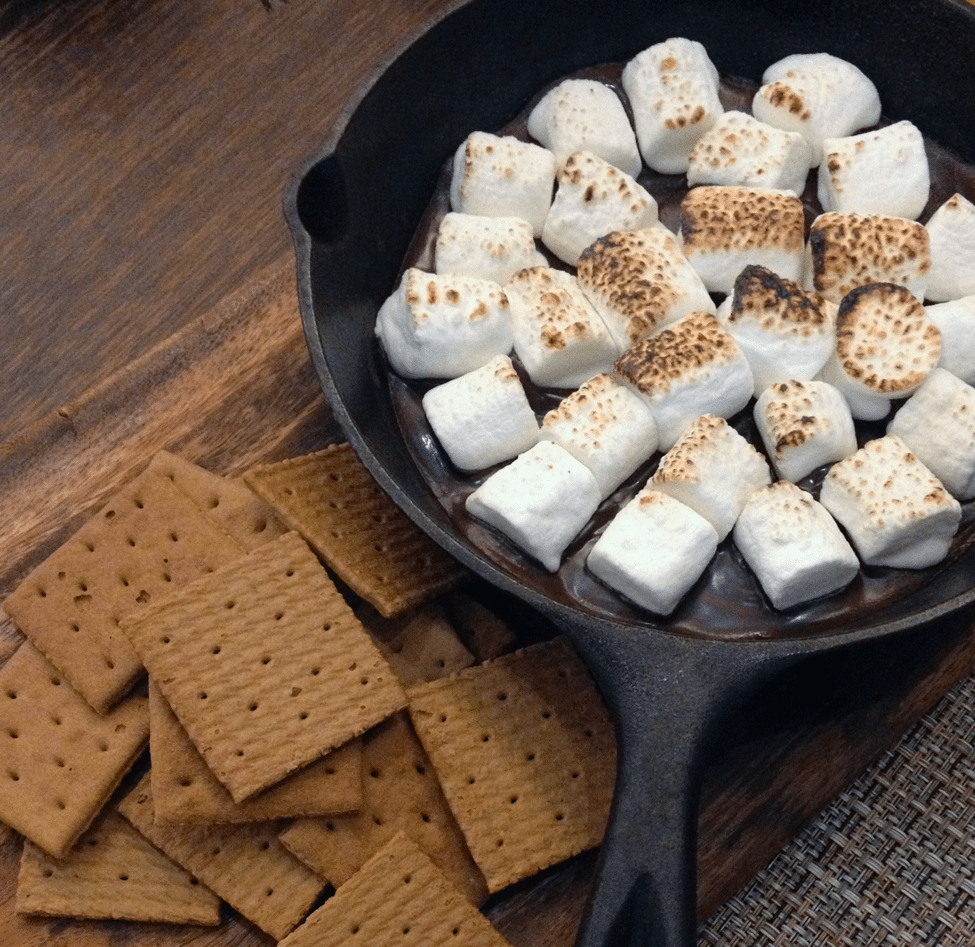If you’ve ever been camping, then chances are, you’ve cooked food on a campfire at least once. There’s just something about a hot dog or a marshmallow roasted over an open flame that seems rustic and fun! With cold weather fast approaching, most of us will be saying goodbye to camping and similar activities…but must we also say goodbye to campfire cooking, as well?
Maybe not. Modern-day fireplaces are often only used for providing warmth and ambience, but many of them can serve a culinary purpose as well. Not all fireplaces should be used for preparing food, though, so read on to learn whether or not you can consider hosting an indoor weenie roast this winter:

If You Have a Gas Fireplace…
Then you probably should not attempt to cook food inside of it. While the idea of working with a consistent, hot flame might be appealing to some folks, doing so is actually unwise for a handful of reasons:
- First and foremost, the inner workings of the fireplace, including ceramic logs and ventilation ducts, must stay clean and open in order to function properly. Cooking food over an open gas fire—especially if you’re roasting hotdogs or marshmallows—can very easily introduce debris (e.g., grease or burnt sugar) into the system. This can lead to damage that will prevent the fireplace from working properly (or safely) in the future.
- Many gas fireplaces have glass screens in place that are tricky to remove and put back on correctly. Screens like these should only be tampered with during an annual inspection/cleaning, and preferably only by a professional.
- There is a potential for dangerous fumes and particles from the gas to contaminate the food you’re trying to heat. Not only does this phenomenon have the potential to make your marshmallows taste weird, but ingesting that stuff is probably not healthy in the long-run.
To be fair, some folks have reported success cooking with their gas fireplaces, but their techniques usually involve using a closed cooking vessel (like a pot with a lid) and carefully balancing the vessel on top of the ceramic logs. Still, we simply cannot recommend gas fireplace cooking. It really seems to be much more trouble (and risk) than it’s actually worth.
If You Have a Wood-Burning Fireplace…
Then it is very possible to cook food inside of it! However, you must exercise caution in order to perform this activity safely. Here are some tips to keep in mind:
- Before you even consider breaking out the hot dogs, verify that your chimney is working correctly. If it’s been more than a year since it was last inspected and cleaned, make an appointment to have this done by a licensed, professional chimney sweep.
- Clear the hearth and surrounding area of any debris or flammable substances. You should do so every time you use the fireplace, but since you’ll probably be opening and closing the screen more often than usual during your cooking session, it’s especially important in this situation.
- Make sure that you’re using “safe” wood for fueling the fire. Remember that woods such as poison sumac, oleander, and Mexican elder all emit toxic (and potentially fatal) fumes when burned, so do not use them under any circumstances!
- Stay as far away from the fire as you can while still getting enough heat to roast your food. It’s usually better to use a longer skewer and/or tongs and keep your distance, rather than use shorter tools and get “up close and personal” with the flames.
- While you don’t have to limit yourself to only cooking hot dogs and marshmallows, know that fattier cuts of meat (like bacon and steak) tend to produce a lot of grease, which can, in turn, produce extra smoke. Take this into account when you’re putting together your menu.
- If children will be cooking alongside the adults, take a moment to brush up on their knowledge of fire safety. Very young children should probably stick to “supervising” the adults cooking their snack.
- Never, ever leave a fire unattended.
***
The answer to the question of, “Can I cook food in my fireplace?” really relies on two different factors. The first is the type of fireplace in your home; wood-burners are usually fine, but gas-burners are probably ill-suited for such a task. The second, meanwhile, is whether or not you’re willing to put forth the effort to cook the food safely and effectively. Roasting edibles over an open flame can be fun, but it can also be dangerous. So please take fireplace precautions seriously, folks!
When done correctly, fireplace cooking can be a fun activity for a cold night. But if you’d like to err on the side of the caution, it might be best to just heat hotdogs on a stovetop…or make s’mores in the microwave.






